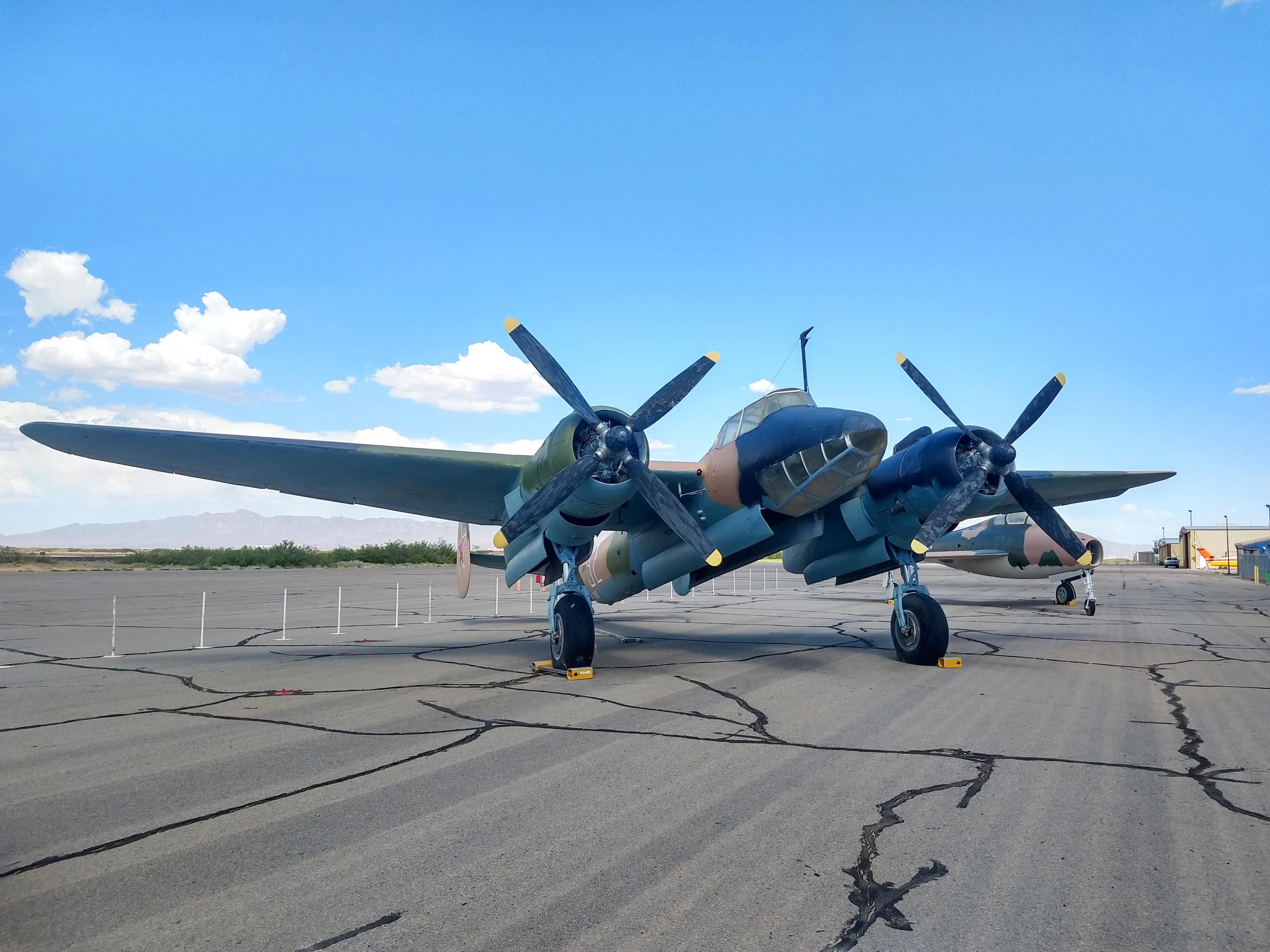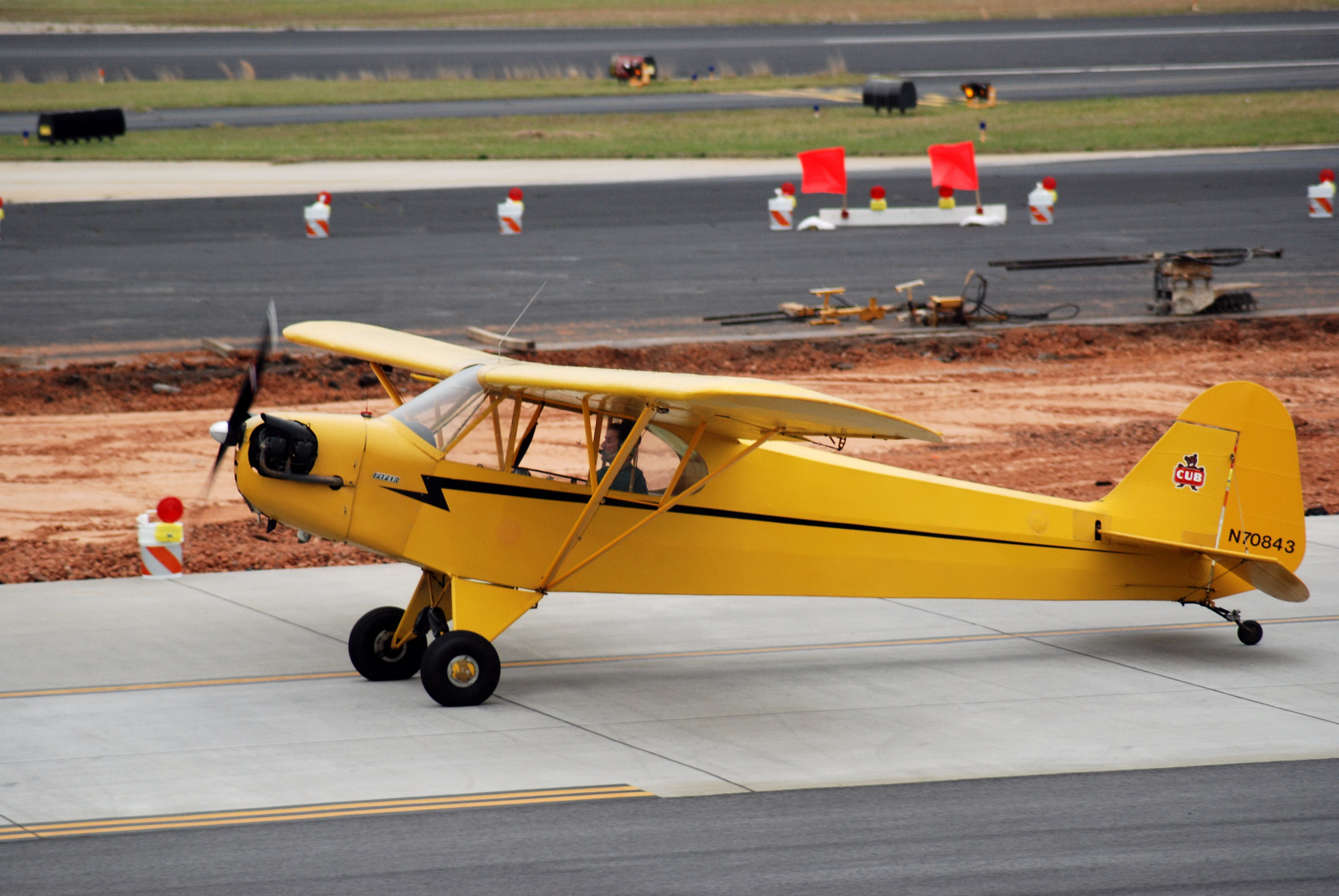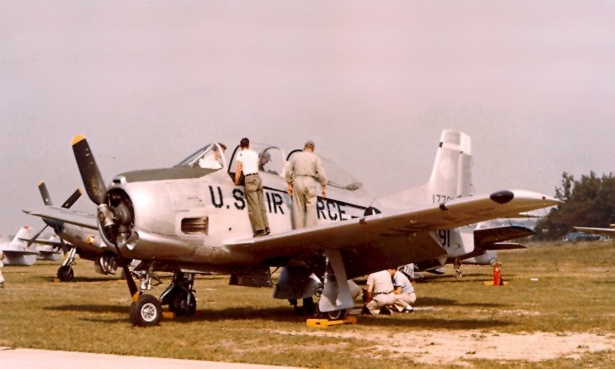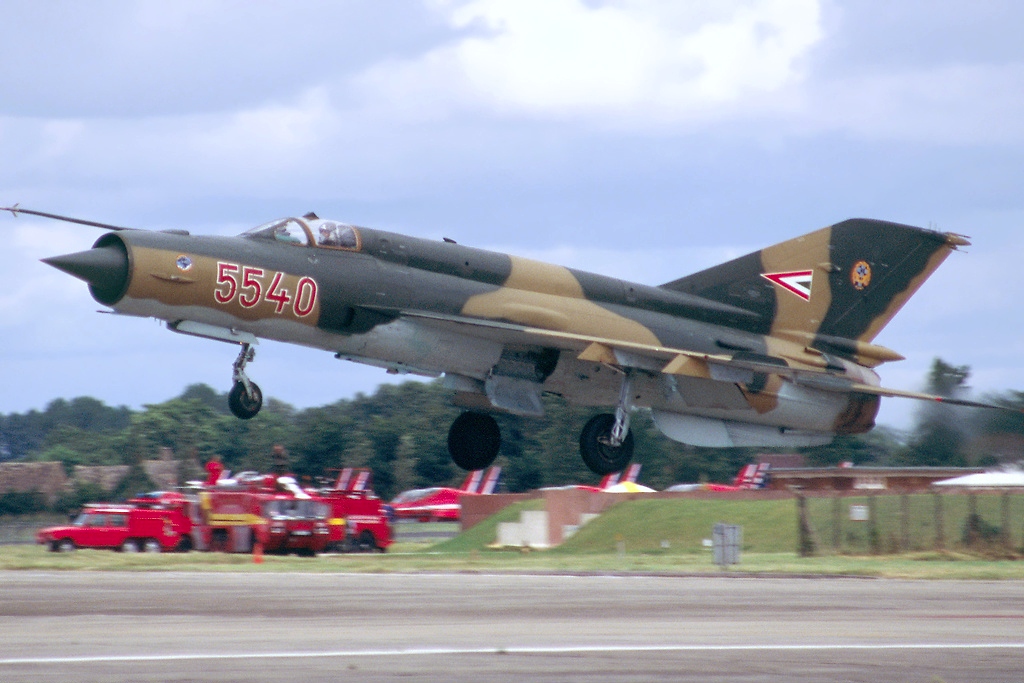|
War Eagles Air Museum
War Eagles Air Museum is an aerospace and automotive museum with several exhibits. It is located at Doña Ana County International Jetport in Santa Teresa, New Mexico. History The museum was established by West Texas engineer, rancher and oilman John T. MacGuire and his wife Betty MacGuire. As pilots, they began collecting warbirds after encountering them in Oshkosh, Wisconsin in 1979. As the collection grew, they looked for a place to build a museum to display their collection. After considering several options such as Las Cruces, New Mexico and Reno, Nevada, John decided to build the museum closer to their home near the Doña Ana County International Airport. The facility unofficially opened to the public on 13 September 1989. Shortly after opening, the museum purchased a Tupolev Tu-2 from China. The museum completed a expansion in 1996. Aircraft * Bell OH-58 Kiowa * Boeing PT-13D * Canadair CT-133 Silver Star * Canadair Sabre 6 * Cessna 140 * Cessna T-37B Tweet * ... [...More Info...] [...Related Items...] OR: [Wikipedia] [Google] [Baidu] |
Santa Teresa, New Mexico
Santa Teresa is a census-designated place (CDP) in Dona Ana County, New Mexico, United States. It is home to the Santa Teresa Port of Entry and is part of the Las Cruces Metropolitan Statistical Area, although geographically it is considerably closer to El Paso, Texas than to Las Cruces. While the United States Census Bureau has defined Santa Teresa as a CDP, the census definition of the area may not precisely correspond to local understanding of the area with the same name. The population was 4,258 at the 2010 census. History In 2015, the community of Santa Teresa petitioned the Doña Ana County Board of Commissioners to incorporate it as a city. When Sunland Park proposed annexing Santa Teresa, every Board member agreed that Sunland Park had no jurisdiction over Santa Teresa, whereupon Sunland Park filed an appeal to that decision with the New Mexico Supreme Court. Geography Santa Teresa is located at (31.853273, -106.641302). According to the United States Census Burea ... [...More Info...] [...Related Items...] OR: [Wikipedia] [Google] [Baidu] |
Hawker Sea Fury
The Hawker Sea Fury is a British fighter aircraft designed and manufactured by Hawker Aircraft. It was the last propeller-driven fighter to serve with the Royal Navy, and one of the fastest production single reciprocating engine aircraft ever built. Developed during the Second World War, the Sea Fury entered service two years after the war ended. It proved to be a popular aircraft with a number of overseas militaries and was used during the Korean War in the early 1950s, and by the Cuban air force during the 1961 Bay of Pigs Invasion. The Sea Fury's development was formally initiated in 1943 in response to a wartime requirement of the Royal Air Force (RAF), with the aircraft initially named Fury. As the Second World War drew to a close, the RAF cancelled their order for the aircraft; however, the Royal Navy saw the type as a suitable carrier aircraft to replace a range of increasingly obsolete or poorly suited aircraft being operated by the Fleet Air Arm. Development of ... [...More Info...] [...Related Items...] OR: [Wikipedia] [Google] [Baidu] |
Republic F-84F Thunderstreak
The Republic F-84F Thunderstreak was an American swept-wing turbojet fighter-bomber. While an evolutionary development of the straight-wing F-84 Thunderjet, the F-84F was a new design. The RF-84F Thunderflash was a photo reconnaissance version. Development In 1948, a swept wing version of the F-84 was created with the hope of bringing performance to the level of the F-86. The last production F-84E was fitted with a swept tail, a new wing with 38.5 degrees of leading edge sweep and 3.5 degrees of anhedral, and a J35-A-25 engine producing 5,300 pound-force (23.58 kN) of thrust.Knaack 1978, p. 42. The aircraft was designated XF-96A. It flew on 3 June 1950 with Oscar P. Haas at the controls. Although the airplane was capable of 602 knots (693 mph, 1,115 km/h), the performance gain over the F-84E was considered minor. Nonetheless, it was ordered into production in July 1950 as the F-84F Thunderstreak. The F-84 designation was retained because the ... [...More Info...] [...Related Items...] OR: [Wikipedia] [Google] [Baidu] |
Piper J-3 Cub
The Piper J-3 Cub is an American light aircraft that was built between 1938 and 1947 by Piper Aircraft. The aircraft has a simple, lightweight design which gives it good low-speed handling properties and short-field performance. The Cub is Piper Aircraft's Piper Aircraft#List of Piper aircraft, most-produced model, with nearly 20,000 built in the United States. Its simplicity, affordability and popularity invokes comparisons to the Ford Model T automobile. The aircraft is a high-wing, strut-braced monoplane with a large-area rectangular wing. It is most often powered by an air-cooled, Flat-four engine, flat-4 piston engine driving a fixed-pitch propeller. Its fuselage is a welded steel frame covered in aircraft fabric covering, fabric, seating two people in tandem. The Cub was designed as a trainer. It had great popularity in this role and as a general aviation aircraft. Due to its performance, it was well suited for a variety of military uses such as reconnaissance, liaison ... [...More Info...] [...Related Items...] OR: [Wikipedia] [Google] [Baidu] |
Northrop AT-38B Talon
The Northrop T-38 Talon is a two-seat, twinjet supersonic jet trainer. It was the world's first, and the most produced, supersonic trainer. The T-38 remains in service in several air forces. The United States Air Force (USAF) operates the most T-38s. In addition to training USAF pilots, the T-38 is used by NASA. The U.S. Naval Test Pilot School in Patuxent River, Maryland, is the principal US Navy operator (other T-38s were previously used as USN for dissimilar air combat training until replaced by the similar Northrop F-5 Tiger II). Pilots of other NATO nations fly the T-38 in joint training programs with USAF pilots. , the T-38 has been in service for over 60 years with its original operator, the United States Air Force. In September 2018, USAF announced the replacement of the Talon by the Boeing-Saab T-7 Red Hawk with phaseout to begin in 2023. Design and development In 1952 Northrop began work on a fighter project, the '' N-102 Fang'', with shoulder-mounted d ... [...More Info...] [...Related Items...] OR: [Wikipedia] [Google] [Baidu] |
North American T-28 Trojan
The North American Aviation T-28 Trojan is a radial-engine military trainer aircraft manufactured by North American Aviation and used by the United States Air Force and United States Navy beginning in the 1950s. Besides its use as a trainer, the T-28 was successfully employed as a counter-insurgency aircraft, primarily during the Vietnam War. It has continued in civilian use as an aerobatics and warbird performer. Design and development On September 24, 1949, the XT-28 (company designation NA-159) was flown for the first time, designed to replace the T-6 Texan. The T-28A arrived at the Air Proving Ground, Eglin Air Force Base, Florida, in mid-June 1950, for suitability tests as an advanced trainer by the 3200th Fighter Test Squadron, with consideration given to its transition, instrument, and gunnery capabilities. Found satisfactory, a contract was issued and between 1950 and 1957, a total of 1,948 were built. Following the T-28's withdrawal from U.S. military service, ... [...More Info...] [...Related Items...] OR: [Wikipedia] [Google] [Baidu] |
North American T-6 Texan
The North American Aviation T-6 Texan is an American single-engined advanced trainer aircraft used to train pilots of the United States Army Air Forces (USAAF), United States Navy, Royal Air Force, Royal Canadian Air Force and other air forces of the British Commonwealth during World War II and into the 1970s. Designed by North American Aviation, the T-6 is known by a variety of designations depending on the model and operating air force. The United States Army Air Corps (USAAC) and USAAF designated it as the AT-6, the United States Navy the SNJ, and British Commonwealth air forces the Harvard, the name by which it is best known outside the US. Starting in 1948, the new United States Air Force (USAF) designated it the T-6, with the USN following in 1962. It remains a popular warbird used for airshow demonstrations and static displays. It has also been used many times to simulate various historical aircraft, including the Japanese Mitsubishi A6M Zero. A total of 15,495 ... [...More Info...] [...Related Items...] OR: [Wikipedia] [Google] [Baidu] |
North American P-51D Mustang
Over twenty variants of the North American P-51 Mustang fighter were produced from 1940, when it first flew, to after World War II, some of which were employed also in the Korean War and in several other conflicts. Allison-engined Mustangs NA-73X The prototype of the Mustang, designated NA-73X, was rolled out by North American Aviation on 9 September 1940, albeit without an engine, and was first flown the following 26 October. The Mustang was originally designed to use a low-altitude rated Allison V-1710 engine. Unlike later models, Allison-powered Mustangs were characterized by the carburetor air intake placed on the dorsal surface of the nose, immediately behind the propeller. Mustang Mk I (NA-73 and NA-83) The first production contract was awarded by the British for 320 NA-73 fighters, named Mustang Mk I by an anonymous member of the British Purchasing Commission; a second British contract soon followed, which called for 300 more (NA-83) Mustang Mk I fighters. Contractua ... [...More Info...] [...Related Items...] OR: [Wikipedia] [Google] [Baidu] |
North American FJ-2 Fury
The North American FJ-2 and FJ-3 Fury are a series of swept-wing carrier-capable fighters for the United States Navy and Marine Corps. The FJ-2 resulted from an effort to navalize the North American F-86 Sabre operated by the United States Air Force. These aircraft feature folding wings, and a longer nose landing strut designed to increase angle of attack upon launch and to accommodate a longer oleo to absorb the shock of hard landings on an aircraft carrier deck. Although sharing a U.S. Navy designation with its distant predecessor, the straight-winged North American FJ-1 Fury, the FJ-2/-3 were completely different aircraft. (The later FJ-4 was again, a complete structural redesign of the FJ-3). The FJ-2 was one of the aircraft used to evaluate the first steam catapult on a US Navy aircraft-carrier. Design and development FJ-2 By 1951, the Navy's existing straight-wing fighters were inferior in performance to the swept-wing Soviet Mikoyan-Gurevich MiG-15 then operating ... [...More Info...] [...Related Items...] OR: [Wikipedia] [Google] [Baidu] |
Morane-Saulnier MS
Aéroplanes Morane-Saulnier was a French aircraft manufacturing company formed in October 1911 by Raymond Saulnier (1881–1964) and the Morane brothers, Léon (1885–1918) and Robert (1886–1968). The company was taken over and diversified in the 1960s. History Model development Morane-Saulnier's first product was the Morane-Borel monoplane, a development of a monoplane design produced by the Morane company (sometimes called Type A) in partnership with Gabriel Borel). Using a wing-warping mechanism for control, this was the type in which Jules Védrines won the Paris-Madrid race on May 26, 1911. Morane-Saulnier's first commercially successful design was the Morane-Saulnier G, a wire-braced shoulder-wing monoplane with wing warping. This led to the development of a series of aircraft and was very successful in racing and setting records. The Type G was a 2-seater, and was reduced slightly in size to produce the Morane-Saulnier H, a single-seater, and was given a fa ... [...More Info...] [...Related Items...] OR: [Wikipedia] [Google] [Baidu] |
Mil Mi-2
The Mil Mi-2 ( NATO reporting name Hoplite) is a small, three rotor blade Soviet-designed multi-purpose helicopter developed by the Mil Moscow Helicopter Plant designed in the early 1960s, and produced exclusively by WSK "PZL-Świdnik" in Poland. Design and development The Mi-2 was produced exclusively in Poland, in the WSK "PZL-Świdnik" factory in Świdnik. The first production helicopter in the Soviet Union was the Mil Mi-1, modelled along the lines of the S-51 and Bristol Sycamore and flown by Mikhail Mil's bureau in September 1948. During the 1950s it became evident, and confirmed by American and French development, that helicopters could be greatly improved with turbine engines. S. P. Isotov developed the GTD-350 engine and Mil used two of these in the far superior Mi-2. The twin shaft-turbine engines used in the Mi-2 develop 40% more power than the Mi-1's piston engines, for barely half the engine weight, with the result that the payload was more than doubled. ... [...More Info...] [...Related Items...] OR: [Wikipedia] [Google] [Baidu] |
Mikoyan-Gurevich MiG-21
The Mikoyan-Gurevich MiG-21 (russian: Микоян и Гуревич МиГ-21; NATO reporting name: Fishbed) is a supersonic jet aircraft, jet fighter aircraft, fighter and interceptor aircraft, designed by the Mikoyan, Mikoyan-Gurevich OKB, Design Bureau in the Soviet Union. Its nicknames include: "balalaika", because its planform (aeronautics), planform resembles the balalaika, stringed musical instrument of the same name; "''Ołówek''", Polish language, Polish for "pencil", due to the shape of its fuselage, and "''Én Bạc''", meaning "silver swallow", in Vietnamese language, Vietnamese. Approximately 60 countries across four continents have flown the MiG-21, and it still serves many nations six decades after its maiden flight. It set aviation records, becoming List of most-produced aircraft, the most-produced supersonic jet aircraft in aviation history, the most-produced combat aircraft since the Korean War and, previously, the longest production run of any combat air ... [...More Info...] [...Related Items...] OR: [Wikipedia] [Google] [Baidu] |





.jpg)
.jpg)



